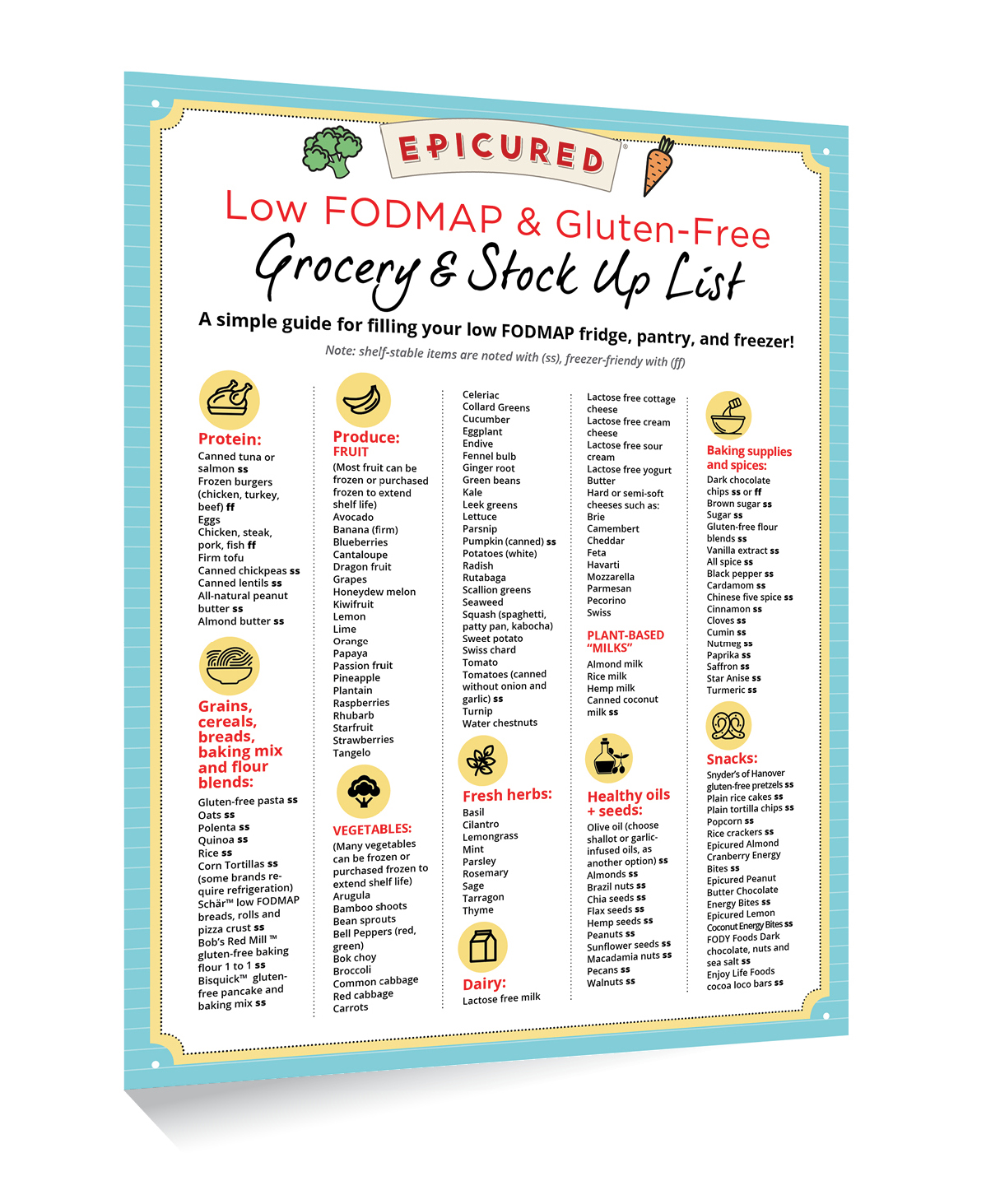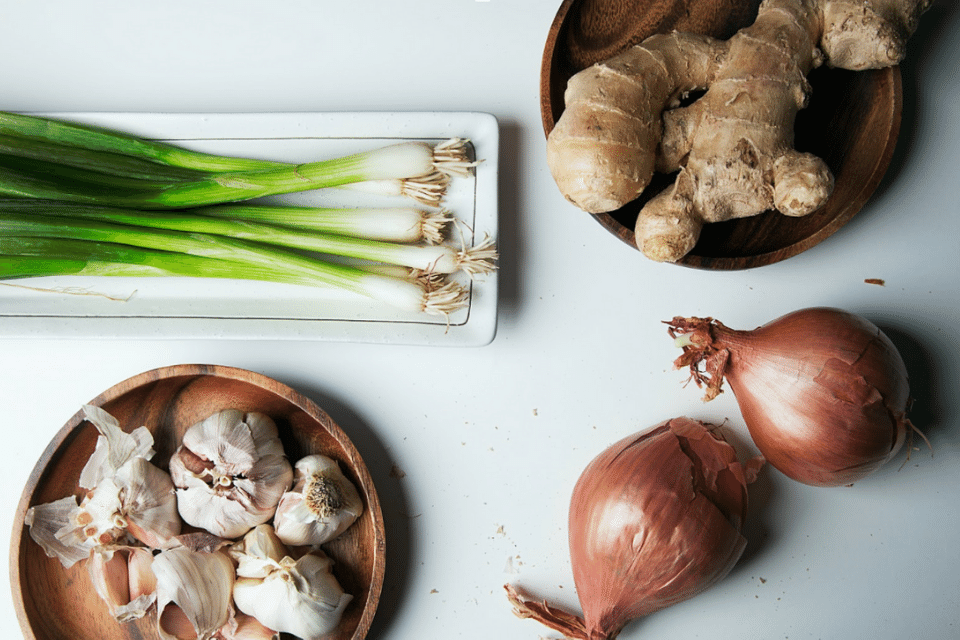The low FODMAP diet is a science-based nutritional approach developed by researchers at Monash University and first published in 2006. The FODMAP diet is now used as a best practice by medical doctors and registered dietitians around the world to effectively manage symptoms of irritable bowel syndrome (IBS). In fact, the low FODMAP diet helps minimize digestive distress in 3 out of 4 people living with IBS! This is exciting news for those of us who have been living with troublesome IBS symptoms. The idea of being symptom-free by eliminating certain high FODMAP foods certainly feels like paradise.
That said, tackling the ins and outs of to find out what foods are high FODMAP can be overwhelming. And you’re not wrong, it can be tricky, but this post is going to give you the confidence to understand where to get started. As we learn together, keep in mind that this is not a long-term elimination diet. The goal is to learn which foods work well for you and your most vibrant health!
Before we get started: We highly encourage you to work with a clinician to get support. My directory can be found here. It’s important that you do not start a low FODMAP diet without proper evaluation from your doctor. This nutritional approach is not suited for everyone and an expert dietitian can provide individualized guidance to make low FODMAP recipes, grocery shopping, menu planning, and label reading a whole lot easier!
Okay, now let’s start with the basics of the low FODMAP diet and work our way through an overview of each of the 3 phases of the FODMAP diet.
What the FODMAP?
This just might be the worst acronym you’ve ever met. But, don’t worry, there’s no pop quiz. We’ll cover it once and you can forget it after that! FODMAP stands for Fermentable Oligosaccharides, Disaccharides, Mono-saccharides And Polyols. Wow, what a mouthful! How appropriate that it stands for foods you *don’t* necessarily want in your mouth!
The term “saccharide” simply means sugar. In essence, FODMAPs are short-chain carbohydrates: small sugars and fibers that are poorly absorbed in the intestine, so they sit in the gut and pull in water and spin off gas (because they’re fermentable), and, as a result, trigger those all-too-familiar IBS symptoms such as abdominal pain, gas, bloating or alteration in bowel habits.
FODMAPs are found in all sorts of healthy, common foods: from onion and garlic to wheat and milk. Even apples, pears, and watermelon are high FODMAP foods. We won’t go into all the details in this post, but you should know that there are 5 FODMAP subgroups:
1. Fructans (found in wheat, garlic, onions and other fruits and vegetables, and the food additives fructooligosaccharides aka FOS and inulin),
2. Fructose (sugar found in many fruits, honey, and high fructose corn syrup),
3. Lactose (found in dairy),
4. Galactooligosaccharides (also called GOS or galactans, which are common in legumes), and
5. Polyols (sugar alcohols like mannitol found in artificial sweeteners).
Now for some GREAT NEWS!
That’s all a lot to digest (pun intended), so now for some actually great news: There are TONS of nourishing and delicious low

FODMAP foods too! We recommend focusing on what you CAN have instead of what you can’t. All food groups are included on a low FODMAP diet so there are plenty of foods to choose from.
Our Low FODMAP and Gluten-free Grocery & Stock up List will guide you on your journey to ensure you get a wide variety of gut-friendly foods during the elimination phase.
Speaking of the elimination phase – let’s get into the nitty gritty of the 3 phases of our FODMAP nutritional approach…
Phase 1: The elimination phase of the low FODMAP diet
The initial phase of the low FODMAP diet is called the elimination phase. This phase is generally followed for about 2-6 weeks. During the elimination phase, foods rich in FODMAPs are eliminated from the diet. Check out Epicured’s grocery and pantry list above for foods to enjoy during the low FODMAP elimination phase.
Did you know all of Epicured’s menu items are low FODMAP elimination phase friendly? It’s true! So peruse and enjoy the 70 plus low FODMAP menu offerings on Epicured.com. Low FODMAP + gluten free tacos, anyone? Count me in!
Phase 2: The reintroduction phase of the low FODMAP diet
During this second phase of the low FODMAP diet, FODMAP-containing foods are systematically added back into the diet to learn which FODMAPs trigger your personal digestive symptoms. Everyone is different, so it’s important to be patient and pay attention to
.jpg)
your body during this process. Sometimes this is called the “challenge phase,” but there are lots of tools to make this less challenging. Check out our brand new Phase 2 Low FODMAP Reintroduction + Symptom Tracker handout to make this phase a whole lot easier. The reintroduction of FODMAPs is an essential part of the 3 phase low FODMAP
elimination diet. Once you determine which foods you tolerate and which ones you do not, you can personalize and expand your diet.
Phase 3: The personalization phase of the low FODMAP diet
During this phase of the low FODMAP diet, foods that have been deemed tolerable in the reintroduction phase of the diet are slowly added back into the diet. The end goal of the low FODMAP elimination diet is to enjoy the most varied diet possible while maintaining good symptom control. Tolerance to FODMAPs can change over time, so re-doing some of the FODMAP reintroductions on occasion is a good idea. An over-restricted diet is not the goal of the low FODMAP diet! Gaining good symptom control to allow for a fuller life and delicious food IS the goal!
Epicured has even more complimentary handouts to help guide you through a low FODMAP diet! Check them out here:
Low FODMAP Diet Reintroduction Phase + Symptom Tracker handout
Low FODMAP & Gluten-free Grocery & Stock Up List
Low FODMAP get more (how to maximize nutrition on a low FODMAP diet)


.jpg)
